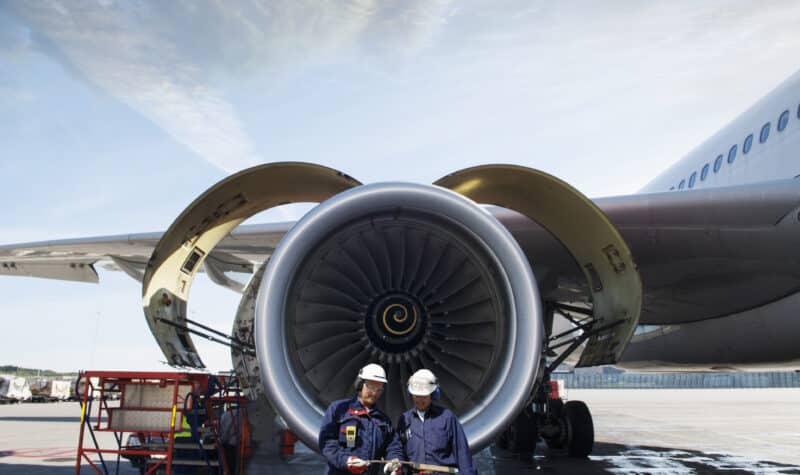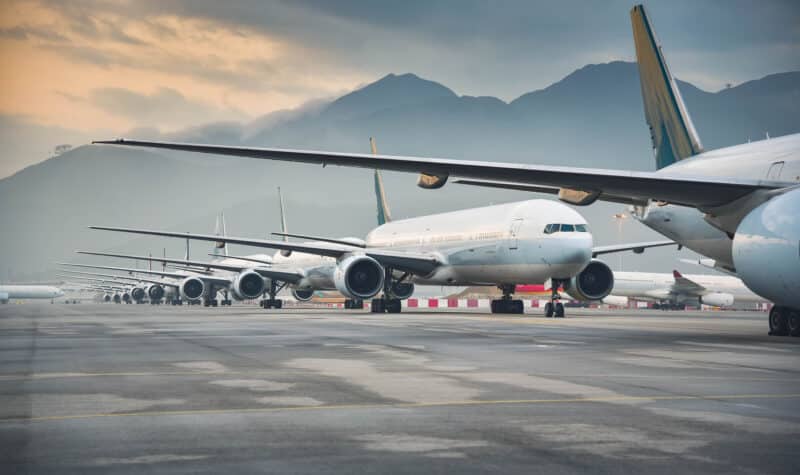SUMMARY
- The US regulatory landscape is much more favourable towards bio-based SAFs, particularly those using a crop feedstock, as compared to other geographies like the UK and EU.
- The previous Biden administration deployed a number of measures to support the growth of the domestic SAF market, particularly tax credits and subsidies
- While the new Trump administration has promised to cut support for renewables in favour of fossil fuels, red state-favouring biofuel incentives are likely to remain in place.
- SAF plants in the US have been able to overcome financial hurdles more quickly than European counterparts, and some investment has been funnelled towards e-fuel producers as disruptors in the SAF market. However, it is unclear whether this will continue under this new Trump presidency, where fossil fuels and some biofuels are favoured.
The United States (US) government has enacted several initiatives in support of the growth of their domestic sustainable aviation fuel (SAF) market as a key instrument to addressing the climate impacts of aviation. Due to its geography, the US is home to one of the most extensive aviation networks in the world, and its citizens far exceed those of any other country or region in terms of flights per capita1. Aviation represents about 3 per cent of US total greenhouse gas (GHG) emissions, with the sector expected to see “rapid year-over-year growth”2. It is also the world’s largest producer of crude oil, the critical feedstock of jet fuel, achieving record-level production in 20233.
As the global aviation industry increasingly recognises the importance of reducing GHG emissions, collaboration and harmonisation of SAF policies across countries are becoming more common through mechanisms like CORSIA. However, the US regulatory landscape has taken some distinct approaches to tackling aviation’s climate impact. While other governments have supported SAF by combining funding, legislation, incentives, and research and development initiatives, the US has chosen to heavily prioritise subsidy and tax credit mechanisms.
Furthermore, when compared to the SAF policy landscapes of other developed countries, US SAF policy is much more accommodating to biomass-based fuels — particularly crop-based SAF derived from corn or sugarcane — which are not permitted under environmental legislation in the EU4 or the UK5. In early 2025, the new Trump administration approved a loan of $1.67 billion for a plant that utilises “vegetable oils, fats, and greases” to produce SAF alongside other commodities like diesel and naphtha6. ICCT found that the “US has approximately 21.7 billion gallons of theoretical SAF production potential from available biomass, but only 12.2 billion gallons of that is from sustainably available biomass7.” As such, SAF has become a highly politicised topic in terms of the environmental and socio-economic opportunities and risks it presents8.
The early months of Trump’s second term have already seen many environmental measures rolled back, risking an additional 2 – 4 billion tonnes of CO2 emissions by 20309. That has included an “immediate pause” on Inflation Reduction Act spending, though the $170 billion in grants and loans allocated under Biden will be challenging for this new administration to “claw back”10. For now, it is unclear what the repercussions will be from these early actions for the SAF market in the US, but some aviation industry players have come out in support of continued climate efforts11.
SAFs grand challenge
The Biden Administration launched the SAF Grand Challenge in 2021 which aims to scale domestic production, establishing a production target of three billion gallons by 2030 and 35 billion gallons by 205012 (compared to around 15.8 million available today13). The Grand Challenge is a collaborative programme between the Department of Energy (DOE), Department of Transportation (DOT), the Department of Agriculture (USDA), and other federal agencies, allowing for a harmonised approach to strategy and resource allocation, alongside acknowledging the need to engage the wider supply chain for SAF and diverse industry stakeholders with a role to play. In late 2024, a comprehensive strategy was launched outlining an implementation framework aimed at demonstrating alignment between government departments towards the Challenge14.
Some examples of initiatives and funding linked to the Grand Challenge include:
- Department of Energy grants: Some 13 SAF projects have received support, with the DOE awarding over $100 million in funding15 and $64.7 million given for projects producing cost-effective, low-carbon biofuels for heavy-duty transportation16.
- Bioenergy Technologies Office (BETO): The DOE has provided $16.7 million for biofuel and biochemical projects via BETO “that will significantly reduce GHG emission” in support of the SAF Grand Challenge17. BETO provides funding and support for SAF research, development, and demonstration projects.
- Fueling Aviation’s Sustainable Transition (FAST) programme: The FAA has made $291 million available to support the goal of net-zero GHG emissions from aviation by 2050, comprising $244.5 million for SAF projects, and $46.5 million for low-emission aviation technology projects18.
Inflation reduction act
The Inflation Reduction Act (IRA) has had a significant impact on the SAF market in the US by offering comprehensive support to encourage the production and adoption of these fuels. In addition to providing research funding, infrastructure investment, and market stability measures, the IRA offers key financial support for SAFs through the Clean Fuel Production Credit (CFPC). This credit awards SAF producers a tax credit equal to a base rate of up to $1.75 per gallon of SAF produced, multiplied by a carbon dioxide emissions factor set annually by the Secretary of the Treasury19. The CFPC runs until the end of 2027 and differs from its predecessor, the Blenders Tax Credit (BTC), in that it rewards fuel producers rather than blenders or GHG reductions from SAFs.
Since the introduction of the IRA, which was widely compared and contrasted to the EU Green Deal20, European policymakers have been responding to the implications of the legislation within their own markets22. The approach to a regulatory framework to support SAF has differed between the two regions, but neither approach is yet viewed as “complete” in terms of assuring market certainty.
A contentious issue surrounding the implementation of the CFPC has been the methodology used to determine the emissions of SAFs, and, thus, which fuels qualify for either credit. Guidance launched in May 2024 by the Biden administration solidified support for the use of crop-derived ethanol in jet fuel23. And now, certain stakeholders are pushing to exclude SAFs made from imported feedstocks from eligibility in favour of domestic biofuels, as well as extending the credit until 2037, locking in such incentives for a longer period24. NGOs have opposed such moves on the basis that they exclude potentially lower-carbon e-fuels from eligibility for the tax credits25.
While President Trump continues to roll back large parts of the IRA as part of his administration’s deregulatory environmental agenda, conservative states are the beneficiaries of the majority of the legislation’s SAF incentives, leading experts to believe that it will not be dismantled in its entirety26.
Renewable Fuel Standard
While primarily focused on transportation fuels like ethanol and biodiesel, the Renewable Fuel Standard (RFS) also includes provisions for advanced biofuels, which qualify as SAFs. This policy sets annual targets for the blending of renewable fuels, called Renewable Volume Obligations (RVOs), creating market incentives for SAF production, and has supported investment into biofuel production infrastructure. SAF must achieve at least a 50 per cent improvement in GHG emissions performance on a life cycle basis as compared with conventional jet fuel as per the RFS.
In 2023, the Environmental Protection Agency (EPA) revised the RFS and established new biofuel volume requirements by increasing targets for renewable natural gas — produced from organic waste sources such as landfills, farms, and food waste — requiring a 25 per cent volume target increase for 2023 and a 33 per cent target for 2025 as compared to previous targets27.
It is possible that this Trump term could see the RFS weakened, as was the case during the President’s first term. This was through the generous issuance of Small Refinery Exemptions (SREs) to oil refiners28, which reduced RVOs at ethanol producers’ expense. Trump’s appointee to head the EPA, Lee Zeldin, is backed by the oil and gas industry and is expected to undermine the RFS30.
State-level
Independent US states are also pursuing their own SAF activities, including California’s Low-Carbon Fuel Standard, Oregon’s Clean Fuels programme and Washington’s Clean Fuels Standard, all of which have aviation fuels as “opt-in” fuels whereby SAF can generate credits; however, conventional jet fuel use is not penalised31. States are expected to become the hub for American SAF innovation as many look to “Trump-proof” their existing renewable energy programmes32.
There are a handful of SAF projects scaling up across the US33 and some investments are starting to flow into e-fuel first-of-a-kind (FOAK) projects at the state-level. Project Roadrunner in Texas, which will convert waste carbon dioxide and renewable power into SAF and other low-carbon fuels through financial support from Breakthrough Energy Catalyst, Citi and American Airlines34.
Other financial mechanisms
The US government has several other funding, tax credit and subsidy schemes it has deployed that can benefit the SAF market, as outlined in Table 1 below.
| Department | Scheme | Purpose |
| Department of Agriculture (USDA) | Biomass Crop Assistance programme (BCAP) | Offers financial assistance to farmers and biofuel producers for growing and harvesting biomass crops that can be used to produce SAFs. |
| Rural Energy for America programme (REAP) | Provides grants and loan guarantees to rural businesses and agricultural producers for renewable energy projects, including SAF production facilities. | |
| BioPreferred programme | Aims to increase the use of bio-based products, including fuels, across federal agencies. It provides opportunities for SAF producers to gain visibility and access federal procurement opportunities. | |
| Internal Revenue Service (IRS) | Inflation Reduction Act – Clean Fuel Production Credit (CFPC) | Offers a credit of up to $1.75 per gallon of SAF produced. Runs through to the end of 2027. |
| Department of Defense (DOD) & NASA | Federal procurement | The US Government has shown interest in using SAFs for its own fleet of aircraft. Federal agencies have been exploring opportunities to incorporate SAFs into their operations, setting an example for the broader aviation industry. |
| Department of Transport (DOT) & Federal Aviation Administration (FAA) | Commercial Aviation Alternative Fuels Initiative | CAAFI works to promote the development and deployment of SAFs. It facilitates collaborations between government, industry, and academia to accelerate the commercialisation of SAFs. |
| Research and development programmes | The FAA also supports SAF testing and analysis Aviation Sustainability Center (ASCENT) research projects and through the Continuous Lower Energy, Emissions, and Noise (CLEEN) programme. | |
| Fueling Aviation’s Sustainable Transition (FAST) programme | Provides grants of up to $50,000,000 to support the development of SAF. Eligible projects include SAF production, transportation, blending and storage. |
Further analysis of US policy
- InfluenceMap have produced an extensive briefing outlining the US SAF policy landscape and how industry has been responding to and engaging with policy development. Read their briefing here.
- The International Council on Clean Transportation (ICCT) have produced a white paper outlining the current and future policy measures needed to be able to meet the aspirations of the SAF Grand Challenge, expertly outlined here.
- ICCT have also conducted an extensive analysis of the current and projected future costs of e-kerosene in the US and Europe, noting the role policy can play in scaling these fuels that are more sustainable and scalable than their bio-SAF counterparts. Read more here.
- The Rocky Mountains Institute (RMI) have conducted research and analysis into the evolution of US SAF Policy and regional opportunities in their extensive report you can read here.
- RMI have also summarised the role of state-level action, focusing on hydrogen-derived fuels in hard to abate sectors like aviation in their analysis here.
- The World Resources Institute (WRI) have outlined how recent lobbying campaigns and industry action in the US have allowed less sustainable aviation fuels to be eligible for tax credits. Read that analysis here.
Our aviation programme focuses on Europe as a key region where action on addressing the climate impact of aviation is needed through scaling high integrity synthetic SAF, challenging dominant industry narratives and accelerating zero emission flight. The US is an influential global player in the SAF space, and its regulatory framework is actively shaping investment and action in Europe and beyond, which this briefing aims to summarise. To hear more about our aviation work, get in touch.
Download this policy mapping for your records.
We aim to update this webpage regularly over time. If you’re interested in keeping a copy of this policy mapping in its current form, download the document below.



